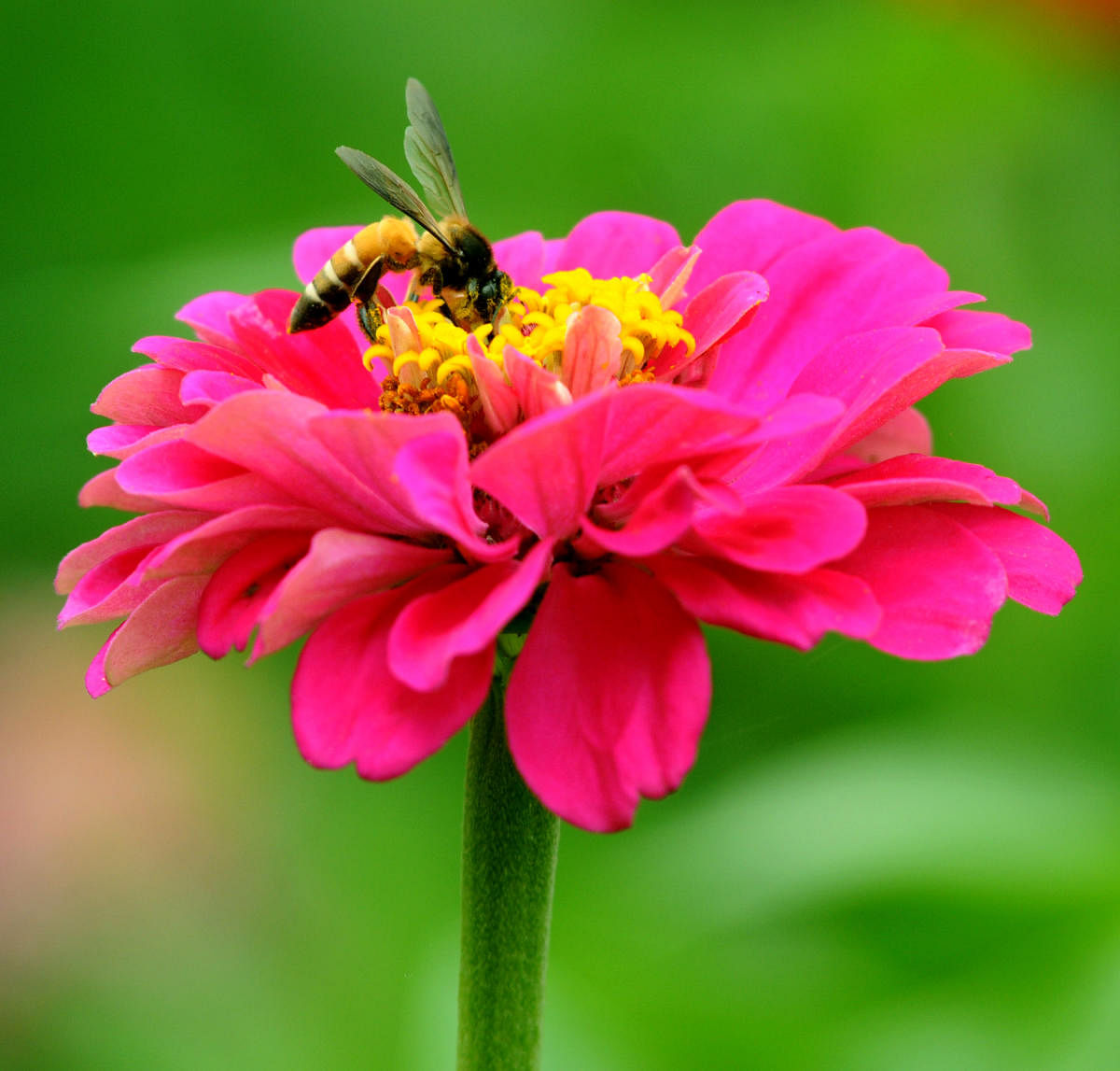Bizarre patterns, vibrant colours, heady scents—flowers present a buffet of choices to draw pollinators. In fact, studies have shown that bees, butterflies, and other pollinating insects have particular preferences in the flowers they visit. What’s more, they also tweak their tastes according to the changing environment.
Researchers found that the female common emigrant butterfly, found widely across India, had an innate inclination to the colour yellow while the males preferred both blue and yellow. To some extent, the butterflies could also be trained to change their colour preferences. Odour is also an important deciding factor, and an attractive enough scent can drastically alter or even reverse any learned preferences for colour.
Flowers, too, are known to alter their characteristics to attract more pollinators. While rhododendrons in the lower slopes of the Himalayas have longer flowers and diluted nectar, the plants at higher altitudes have altered themselves to have smaller flowers which are chock full of rich nectar to attract more flies and bumblebees.
Recently, researchers found that some flowers have been altering their colours by dialling up the pigmentation in response to climate change. Some scientists worry that pollinators might overlook such flowers altogether. Only a better understanding of plant-pollinator interactions can tell us how such changes will impact the world’s pollinators, and by extension, our food supply.
